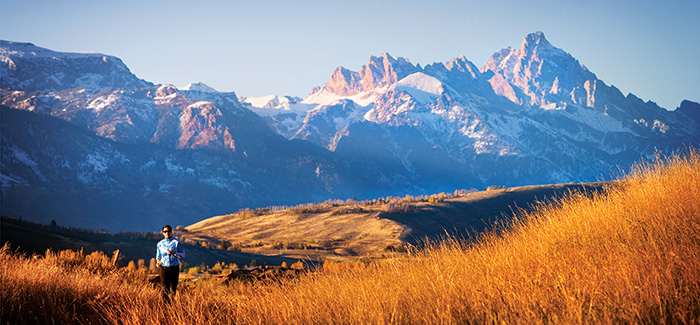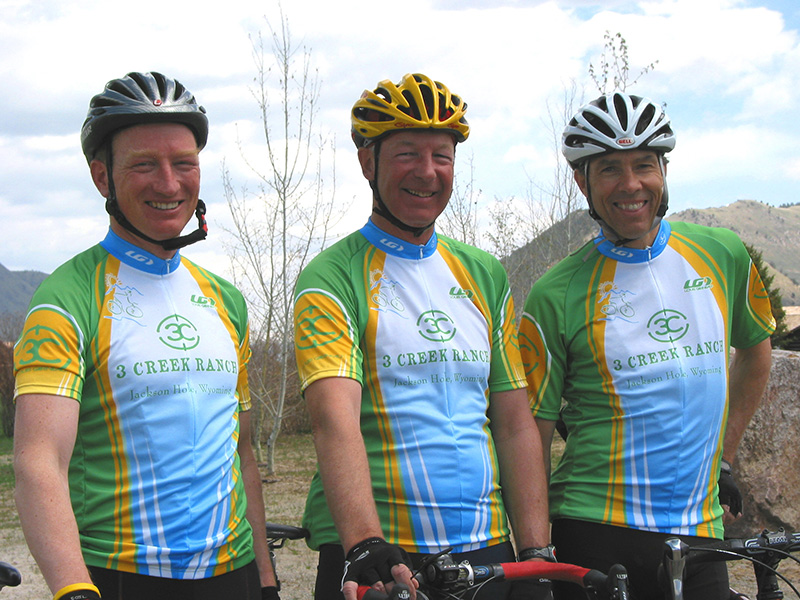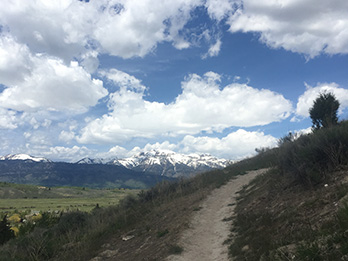 |
|
« Back |
Post Date: Monday, May 30, 2016 |
|
|
Summer Greetings from the Nature Center
Welcome summer and hiking equipment overview from Resident Naturalist, Roger Smith.
 |
Greetings from the Nature Center,
I welcome all of you to the 2016 summer naturalist-led activities and Outdoor Pursuits at the Nature Center. I am excited to share our time together exploring the natural history of our valley, and at some of the on-going functions at the Center.
Every Wednesday I will send a weekly schedule of events that will include group hikes, cycling, stewardship activities, and special events such as Ice Cream Socials and Naturalist’s talks. My weekly events will start June 6, but please contact me if you are in Jackson and would like to get out for a hike or bike ride before this date.
Included with this letter is an overview of the hiking guidelines, along with additional information on clothing and equipment specific to our hiking program. My goal is to provide a safe, relaxing and informative guided experience with each of you. Once again, I truly look forward to sharing our summer days together exploring the mountains and valleys of Jackson Hole.
As always, please call or email me if I can be of assistance.
Respectfully,
Roger Smith
Resident Naturalist, 3 Creek Ranch |
  |
| 3 Creek Ranch Hiking Equipment Guidelines | Summer 2016 | By: Roger Smith |
Walking into an outdoor gear shop to get the basic necessities can be intimidating. Please do not hesitate to contact me if I can assist you in learning more about the best equipment that is most appropriate for all our Outdoor Pursuits programs.
The following are my suggestions for clothing and equipment for all 3 Creek Ranch hikes.
Easy Hikes:
- Daypack: 1,000-1,200 cc, or lumbar/fanny pack:
Clothing: rain jacket, thin fleece layer, warm hat:
Other: durable 1-liter water bottle, food/energy bars, etc., appropriate durable
shoes, sunscreen, sunglasses, bear spray.
Moderate or Strenuous Hikes:
- Daypack: 1,200-1,800 cc:
Clothing: rain jacket, fleece layer, ball cap, warm hat,
Other: 1-3 liter water bottle or Camelback system, food (lunch/trail food), durable,
low-cut hiking shoes, sunscreen, sunglasses, wool socks, bear spray.
Clothing:
Because of unpredictable weather in the spring and fall, here are a few suggestions for what to carry in your daypack: a mid-weight fleece or Smartwool sweater, a light weight down or synthetic ‘puff jacket”, thin gloves, warm hat. In mid-summer months, I recommend a thin fleece or wool sweater, and a wool/synthetic warm hat and ball cap.
Rain Gear:
All hikers are required to carry a rain jacket. Rain pants are optional but recommended. There is a wide selection of rain gear including coated nylon and breathable fabrics such as Gore-Tex. Some suggested brands include Arc’teryx, Marmot, Patagonia, Columbia, LL Bean, Rabb, Mountain Hardware. A rain jacket with a hood is recommended.
Hiking Shoes:
Spend some time finding a comfortable yet durable hiking shoe. We are not carrying much weight, and for the most part all of our hikes follow established trails. Heavier leather hiking boots are great but not necessary. There are many durable and quality low-cut hiking shoes on the market, so you have great options here. Merrill, Vasque, Patagonia, Salomon, Keen, Selewa are some of the most popular. Running shoes may be okay for hikes under 4 miles long.
Socks:
Wool socks are recommended for all longer distance hikes.
Water Bottles/Hydration:
The #1-essential item to always bring is a durable water bottle or other hydration system. I recommend bringing no less than a 36 oz. water bottle or Camelback hydration system on any of our hikes. For comparison, a 3 Creek Ranch plastic water bottle is 17 oz. and not intended to be carried into the mountains. I have witnessed many of these water bottles break and leak inside a daypack. There are many types of durable bottles on the market, from stainless ‘Kleen Kanteen’ or ‘Sigg’, to the classic PABA-free Nalgene bottle. A Camelback or Platypus water bladder system provides a convenient and easy way to drink on the trail. Water bag systems can be purchased separate from the daypack. All are readily available at a number of and are available in a variety of volume sizes and outdoor gear stores in town.
Hiking Poles:
Hiking poles are optional, but they have their benefits, including reducing the impact of hiking on knee joints and leg muscles. Some people believe that a better ‘rhythm’ is created by walking with poles, and can lead to a more relaxed, regular breathing and increased stamina, particularly going up hills. Additionally, poles help many people with balance issues, such as crossing small streams or along steep portions of a trail. Using poles, however, does increases your total energy expenditure. If you are considering purchasing hiking poles, I recommend looking at the Black Diamond ‘FLZ-adjustable Pole’. This is a durable, collapsible and light weight pole, and one of the best I’ve seen on the market. Note sizes for Men/Woman. Skinny Skis and a few other shops carry them.
Here is what I carry:
Daypack:
3,400 cc; Gregory Z35
3-liter ‘Platypus’ water bag with drinking tube
First aid kit:
Sterile gauze (2”, 3”, 4”), rolled gauze, Neosporin, assorted Band-Aids, Tape, Antiseptic solution, Sting stick, Benadryl, Ibuprofen/Naproxen; Pepto-Bismol, tweezers/scissors, Rubber gloves, irrigation syringe, Blister kit, Ace wrap, Cravats, SAM splint, Sunscreen, lip balm.
Clothing:
Raincoat with hood, rain pants, synthetic hiking pants, lightweight down puff-jacket, synthetic long-sleeved base layer, wool sweater, ball cap, wool hat, fleece gloves, sunglasses.
Other:
Compass, Topo Maps, Field guides, Headlamp, Insect repellant, extra food/energy bars, extra hats and gloves, DeLorme-InReach Satellite text Communicator, HeartSine AED, Emergency Bivy bag, Hand and foot warmers, Water purification system, 2 canisters bear spray.
Again, please contact me if I can be assistance with assembling the most appropriate hiking
equipment for you.
Respectfully,
Roger Smith, Resident Naturalist
|
| |
| |
|
|
 |